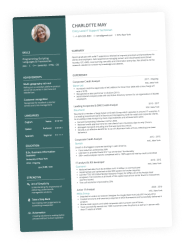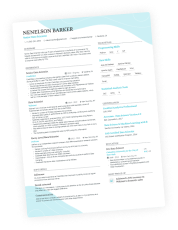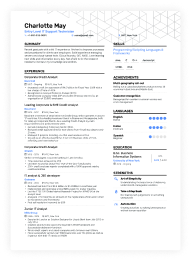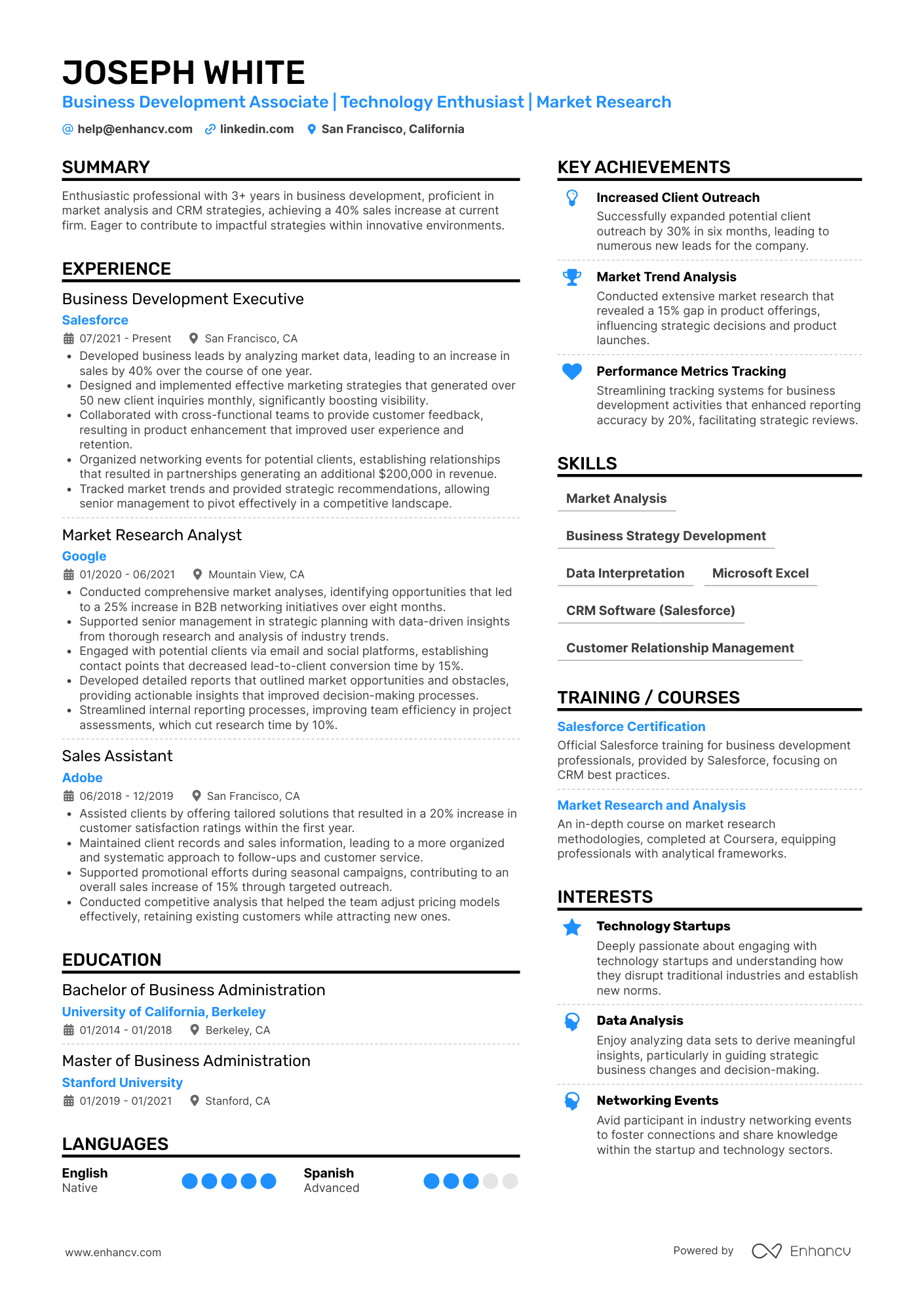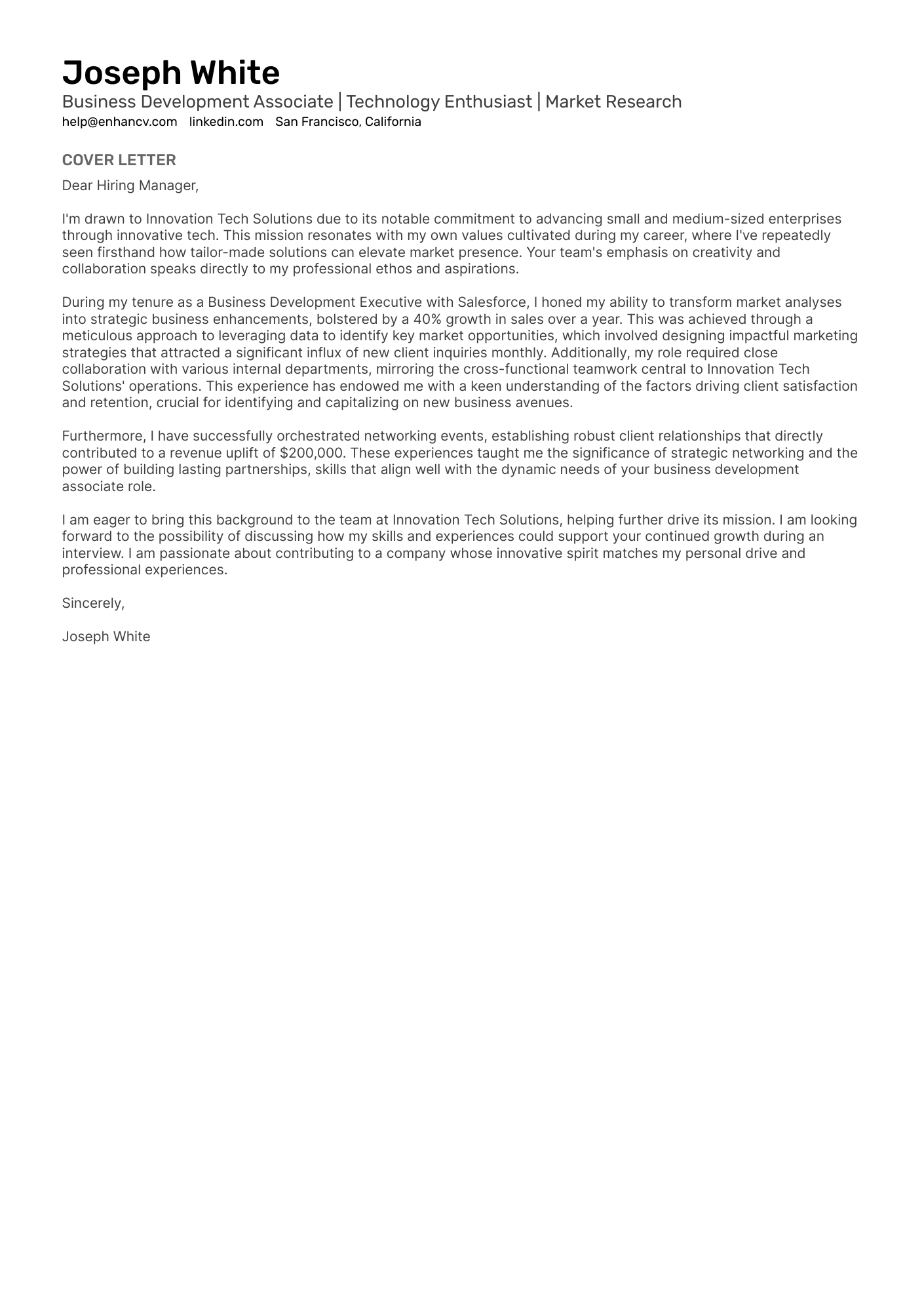The world of startups is both exhilarating and intimidating, but a well-crafted professional profile can be your competitive advantage. Startups seek individuals who are versatile, adaptable, and innovative, and a strong startup resume is your key to standing out in a crowded job market.
Whether you’re an experienced entrepreneur or just beginning your career, tailoring your resume for a startup can emphasize your unique contributions and skills. This guide will show you how to highlight your experience effectively while aligning your objectives with a company’s mission and values.
Key takeaways
- A startup resume should highlight adaptability, initiative, and innovation.
- Clearly articulate your unique contributions and their impact on growth.
- A compelling objective demonstrates passion and cultural alignment.
- Showcasing soft skills like communication, empathy, and creativity sets you apart.
- Quantifying achievements with metrics proves your effectiveness.
- Leveraging your network and references boosts credibility.
- Tailoring your resume to each startup increases your chances of success.
- Education, transferable skills, and resume design all influence startup hiring decisions.
- Even self-employment or failed startups can add value when presented strategically.
Is your resume good enough?
Drop your resume here or choose a file. PDF & DOCX only. Max 2MB file size.
Why a startup resume is different
A startup resume isn’t the same as a corporate resume. Large companies often prize specialization, rigid career progression, and polished formality. Startups, by contrast, value adaptability, initiative, and versatility—because employees are expected to wear multiple hats and solve problems on the fly.
Where a corporate recruiter may be looking for depth in a single skill, a startup recruiter is usually more impressed by breadth of ability and demonstrated scrappiness.
Why this approach works for startups
The advice in this guide is designed with the startup mentality in mind. Instead of padding resumes with generic duties, we focus on real-world impact, measurable results, and initiative.
This mirrors how startups operate: they care less about polished corporate-speak and more about whether you can deliver, adapt, and contribute immediately.
By aligning your resume with this mindset, you’re not just applying for a role—you’re showing that you understand what it takes to thrive in a fast-moving, resource-limited environment.
1. Highlighting your unique startup contributions
Articulating your unique contributions with clarity and confidence is crucial, as they form the backbone of your success. In a startup resume, it’s not just about listing duties but showcasing how your actions drove the company forward.
Start by identifying the most significant problems you’ve solved and the innovative solutions you've implemented.
For example, if you streamlined a complex process, describe it with strong action verbs:
Instead of “I helped improve the workflow,” write “I reengineered the workflow, reducing processing time by 30% and increasing productivity.”
Leadership in lean environments is also valuable. Startups often need people who step up and lead through rapid growth and change. Emphasize mentoring, managing, and coordinating cross-functional teams.
Adaptability is another essential trait. Show how you wore multiple hats—such as taking on product development or marketing responsibilities outside your role. Always include outcomes, whether in revenue, retention, or customer satisfaction.
Examples
“Redesigned internal reporting process, cutting delivery time from 5 days to 2.”
✅ Specific, measurable, and shows initiative.
“Spearheaded a workflow overhaul that reduced processing time by 30% and boosted team productivity.”
✅ Combines leadership, innovation, and clear impact.
2. Crafting a compelling startup objective or summary
Your startup resume should open with either a resume objective or a resume summary—depending on your background and career goals. Both appear at the top of the document, but they serve slightly different purposes.
Resume objectives for startups
An objective is best if you’re early in your career, making a career change, or breaking into the startup world for the first time. It’s forward-looking: it explains what you’re aiming for and how your passion aligns with the startup’s mission.
Objective examples
“Results-driven marketer seeking to help early-stage SaaS startups scale user acquisition.”
✅ Tailored, concise, and role-specific.
“Dynamic professional eager to leverage growth-hacking expertise and proven track record of increasing customer acquisition by 45% to drive sustainable growth at a mission-driven startup.”
✅ Shows enthusiasm, alignment, and measurable success.
Resume summary for startups
A summary works best if you already have experience in startups or related industries. Instead of stating your goals, it showcases your career highlights and the unique value you bring. This is especially effective when applying to later-stage startups that expect candidates to hit the ground running.
Summary examples
“Startup operations lead with 5+ years scaling early-stage teams, securing $3M in funding, and improving operational efficiency by 20%.”
✅ Quickly communicates experience, results, and leadership.
“Full-stack developer with a background in fintech and a proven record of launching MVPs, optimizing code for scale, and mentoring junior engineers in lean environments.”
✅ Emphasizes technical skills, adaptability, and startup experience.
Startups vs. corporates: how they treat objectives and summaries
- Corporates: Hiring managers often skim or ignore objectives/summaries, focusing instead on experience sections. ATS systems sometimes filter them out altogether.
- Startups: Founders and startup recruiters actually read these sections closely. With fewer applicants and no reliance on ATS in early stages, they want to quickly understand why you care about their mission and how you’ll contribute immediately.
PRO TIP
If you’re new to startups → use an objective to show motivation and fit.
If you’ve already got relevant wins → use a summary to prove you can deliver results from day one.
Optimize your resume summary and objective for ATS
Drop your resume here or choose a file.
PDF & DOCX only. Max 2MB file size.
3. Showcasing the soft skills that set you apart
Soft skills often determine who succeeds in the startup environment. Communication, adaptability, leadership, empathy, and creativity are as crucial as technical skills.
Demonstrate how you adapted messaging for cross-functional teams, facilitated collaboration, or negotiated to align stakeholders. Use verbs like facilitated, coordinated, or negotiated.
Empathy is particularly valuable in customer-facing roles—emphasize how you implemented user feedback or improved customer satisfaction.
Show your ability to handle pressure and juggle multiple projects without compromising quality. Finally, highlight innovation: did you foster brainstorming that led to a new product feature?
Examples
“Facilitated daily stand-ups, ensuring 100% of sprint deadlines were met.”
✅ Ties communication directly to results.
“Adapted communication across engineering and design teams, aligning efforts that cut product launch delays by 25%.”
✅ Shows adaptability and collaboration under pressure.
4. Quantifying your startup achievements
Numbers are the clearest way to demonstrate value. Go beyond responsibilities and focus on measurable outcomes.
If you increased sales, specify by what percentage. If you grew a user base or expanded into new markets, state the numbers. Quantify cost savings, fundraising contributions, or team expansions.
Employers want proof of your ability to deliver results—metrics give them confidence in your effectiveness.
Examples
“Increased customer base by 30% within six months.”
✅ Simple, concrete, growth-focused.
“Launched referral program delivering 200% ROI in 90 days, doubling user acquisition while minimizing marketing costs.”
✅ Highlights efficiency, creativity, and measurable impact.
5. Leveraging your network and references
Networks and endorsements can set you apart in the startup world. References from respected mentors, advisors, and collaborators add weight to your application.
Mention guidance from high-profile industry leaders or collaborations with well-known startups. Include client testimonials or LinkedIn recommendations that reflect your credibility.
The key is to weave this information in subtly. Instead of filling precious resume space with long references, you can signal your connections by noting collaborations in bullet points or adding a brief line in the context of your achievements, like:
“Advised by [Name], founder of [Company]”
This keeps the focus on results, while still highlighting the strength of your network.
Your resume should give a quick, credible signal of these connections, while the cover letter and interview are also good places to elaborate.
On your resume, keep it concise and results-driven; in your cover letter, you can expand on how those relationships shaped your growth; and in the interview, you can share stories that bring them to life.
Examples
“Advised by Jane Smith, founder of a $100M fintech startup.”
✅ Signals credibility and industry relevance.
“Mentorship from Jane Smith guided fundraising strategy that secured $1.5M in Series A capital.”
✅ Connects your network directly to results.
6. Tailoring your resume to each startup
Each startup has unique goals and culture. A generic resume risks looking careless, while tailoring shows genuine interest.
Start by studying the posting carefully and tailoring your resume to the job description. Look at the skills, tools, and qualities emphasized, and make sure those appear clearly in your own experience.
If the posting highlights “customer acquisition” or “product iteration,” echo those terms in your resume where they genuinely fit. This not only shows you understand the role but also helps ensure your resume resonates with startup recruiters.
Go further by researching the company’smission, recent wins, and values. Then align your resume with these insights. For example, if you’re applying to a sustainability-focused startup, highlight your eco-conscious projects or relevant coursework.
This approach signals that you’ve studied both the role and the company and see yourself as part of their journey. It also demonstrates the kind of attention to detail and adaptability that startups expect from every hire.
7. Demonstrating adaptability and initiative
Adaptability and initiative are essential for thriving in startups. Employees are often asked to pivot quickly, take on multiple roles, and solve problems without waiting for instructions.
Just as important are stress management and multitasking. In a startup environment, you may be balancing competing priorities under tight deadlines while wearing several hats at once. Showing that you can stay composed under pressure and still deliver results makes you far more credible to startup recruiters.
Provide examples of how you stepped up—whether launching a program, proposing a strategy, bridging a team gap, or handling multiple projects at the same time. Demonstrating that you’re comfortable with uncertainty, high-pressure environments, and heavy workloads proves that you don’t just survive in chaos—you thrive in it.
Employers want reassurance that you’ll not only adapt but also add measurable value in their dynamic environment.
Examples
“Launched cross-training program enabling engineers to support customer service during peak demand.”
✅ Shows initiative and problem-solving in action.
“Proposed and led cross-training initiative for engineers, reducing churn by 18% and boosting client satisfaction scores.”
✅ Highlights leadership, adaptability, and measurable impact.
8. How to write the education section on a startup resume
Your education section can reinforce your credibility, even in startup environments where skills often matter more than degrees.
Include your degree, school name, and graduation year, but also highlight relevant coursework, projects, and academic achievements or honors that demonstrate personal and professional growth. Tailor this section to reflect practical startup-relevant experience rather than listing education generically.
Education entry example
Bachelor of Science in Computer Science
University of California | Los Angeles, CA
Graduated: 2021
- Relevant Coursework: Data Structures, Machine Learning, Startup Marketing Campaigns.
- Developed a mobile app as part of a capstone project that acquired 1,000+ downloads, showcasing both technical and entrepreneurial skills.
✅ Highlights degree, university, graduation year, and directly ties coursework to startup skills.
✅ Demonstrates applied knowledge and personal growth.
9. How to include startups, side hustles, and self-employment
Startup recruiters value the entrepreneurial spirit, so don’t hesitate to include experiences from self-employment or freelance work, side hustles, or even failed startups if they taught you relevant skills.
List these in your work experience section, emphasizing relevant skills like customer acquisition, accountancy duties, or technical projects (e.g., GitHub repositories). Position employment gaps as professional learning periods that contributed to your growth.
Examples
“Founder, Side Hustle Digital Marketing Agency (2019–2021) | Acquired 25+ clients, managed accountancy duties, and executed campaigns that increased client revenue by 40%.”
✅ Frames self-employment as professional, measurable experience.
“Co-founded a failed startup in edtech; built MVP, pitched at startup networking events, and gained customer acquisition insights later applied in SaaS roles.”
✅ Shows resilience, relevant skills, and learning from failure.
10. Best resume format and design for startup job applications
The format of your resume matters, especially when applying to startups where creativity and professionalism both count.
Use bullet points for scannability. Lean on tools like an AI resume writer or professional resume builder to create a document design that's both appealing and professional.
Example of reverse-chronological format
Growth Marketer
XYZ Startup | San Francisco, CA
2022 – Present
- Led 3 marketing campaigns that boosted user acquisition by 60% in six months.
- Designed and executed a low-cost referral program that increased daily active users by 35%.
- Collaborated with product and engineering teams to launch A/B testing frameworks, improving conversion rates by 22%.
- Managed a $100K budget efficiently, reallocating resources to channels with the highest ROI.
✅ Why it works: Shows a clear timeline, measurable accomplishments, and progression of responsibility.
Example of functional format
Core Skills & Achievements
Digital Marketing Strategy
- Built and scaled SEO-driven content campaigns that generated 50,000 monthly visitors in under a year.
- Created data-driven email funnels that improved customer retention by 18%.
Project Leadership
- Directed a remote team of 6 freelancers to deliver a product launch in under 90 days.
- Coordinated across design, engineering, and sales to align on launch strategy.
Customer Acquisition
- Developed growth tactics that reduced customer acquisition cost (CAC) by 20%.
- Pitched and presented strategies at startup networking events, securing 3 early adopters.
✅ Why it works: Spotlights relevant skills for startup roles, even if formal work history is short or non-linear.
Example of hybrid format
Software Developer
Freelance & Startup Projects
2020 – Present
Selected Achievements:
- Designed and launched a fintech MVP that reached 1,500 active users in 6 months.
- Contributed to an open-source GitHub project, increasing adoption by 40%.
- Partnered with a failed edtech startup, leading to valuable insights into customer acquisition strategies later applied successfully in SaaS roles.
Core Competencies:
- Full-Stack Development (React, Node.js, Python)
- Entrepreneurial Mindset & Lean Development
- Cross-Functional Collaboration
- Customer Acquisition & Retention
✅ Why it works: Provides concrete work experience while also showcasing skills and transferable competencies. It’s perfect for applicants with both traditional roles and startup/side hustle experience.
11. Startup resume vs. cover letter: what’s the difference?
While your resume is a concise record of achievements, a cover letter tells your professional story.
Both serve distinct purposes in job applications
- A resume emphasizes measurable results, skills, and experience.
- A cover letter expands on your professional persona, explaining motivation, culture fit, and career goals.
Keep resumes short (one page), but use cover letters to provide context, especially for tailored applications, employment gaps, or entrepreneurial ventures.
Resume example
Cover letter example
Drop your resume here or choose a file.
PDF & DOCX only. Max 2MB file size.
12. How to highlight transferable skills from startup experience
Startup roles often develop transferable skills that apply across industries. Feature these in a core competencies section or integrate them into your work experience.
Skills like adaptability, leadership, entrepreneurial mindset, and problem-solving appeal to hiring managers beyond the startup environment. Emphasize how they align with your broader career goals.
Examples
Resume Skills Section
“Core Competencies: Entrepreneurial Mindset, Customer Acquisition, Team Leadership, Process Optimization.”
✅ Concise, keyword-rich section highlighting transferable skills.
Work Experience Section
“Applied trade secrets from startup experience to streamline operations in a corporate environment, reducing costs by 15%.”
✅ Shows how startup skills adapt to different contexts.
13. How to present work experience on a startup resume
The work experience section is where startup recruiters focus first. Present your experience with action verbs, company names, employment dates, and measurable accomplishments.
Rather than repeating job descriptions, highlight impact and outcomes. Showcase real-world examples that demonstrate an entrepreneurial mindset and relevant experience.
STAR method for startups
The STAR method (Situation, Task, Action, Result) is a great way to structure your resume bullets so they emphasize outcomes, not just responsibilities.
- Situation/Task: Briefly set the scene (small team, early-stage funding, tight deadline).
- Action: Show what you did (what hat you wore, what initiative you took).
- Result: Quantify the outcome (users gained, revenue earned, time saved).
❌ Generic Example (weak):
“Responsible for managing social media campaigns.”
✅ STAR Startup Example (strong):
“With a 2-person team (Situation/Task), created data-driven social media campaigns (Action) that doubled user engagement and generated 1,200 sign-ups in 3 months (Result).”
Let’s see how a full professional history entry should look.
Complete work experience entries
Good example: Startup Product Manager (chronological format)
Product Manager
ABC Startup | San Francisco, CA
Jan 2020 – May 2023
- Launched a new mobile feature that increased user retention by 25% within three months.
- Coordinated a cross-functional team of 12 across engineering, design, and marketing to accelerate release cycles by 20%.
- Partnered with investors during Series A fundraising, contributing to securing $5M in capital.
- Introduced a customer feedback system that improved NPS (Net Promoter Score) by 15 points.
✅ Why it works: Clear role, dates, company, and measurable results. Demonstrates leadership, fundraising involvement, and customer-focused strategy.
Good example: Self-Employed/Startup Founder (combination format)
Founder & Growth Lead
EdTech Startup (Self-Employed) | Remote
2018 – 2020
- Built an MVP learning platform in 90 days, reaching 2,000 users in beta testing.
- Executed customer acquisition campaigns that cut CAC by 30% and secured 3 school partnerships.
- Managed all accountancy duties, budgeting, and cash flow for a $50K operational budget.
- Though the startup closed, it leveraged lessons learned in user testing and fundraising for later SaaS roles.
✅ Why it works: Frames failed startup/self-employment positively, emphasizes transferable skills, and ties experience to future success.
Bad example: vague startup entry
Startup Work
2020 – 2022
- Worked on various projects.
- Helped with product development.
- Attended meetings and supported the team.
- Learned about startups.
❌ Why it fails: Too vague, no company name, no role clarity, no impact, no numbers. Reads like filler.
Bad example: overloaded with buzzwords
Operations Ninja
Cool Startup
2021 – 2023
- Disrupted the industry with innovative solutions.
- Wore multiple hats in a dynamic, fast-paced environment.
- Synergized cross-functional paradigms to deliver success.
- Responsible for growth hacking and thought leadership.
❌ Why it fails: Uses startup clichés (“ninja,” “disrupted,” “synergized”), no concrete achievements, no metrics. Sounds flashy but empty.
Preparing for a startup interview
A strong resume gets you noticed, but the interview is where startup recruiters will test your flexibility, problem-solving, and cultural fit. Unlike corporate interviews that may stick to formal scripts, startup interviews are often casual, unpredictable, and focused on mindset.
Expect to be asked how you’d handle ambiguous scenarios, balance competing priorities, or contribute outside your job title. Be ready to discuss moments where you thrived under uncertainty, juggled multiple responsibilities, or delivered results with limited resources.
PRO TIP
Use your resume bullets as talking points. If you wrote “launched a referral program that doubled acquisition,” be prepared to explain the process, trade-offs, and challenges behind that success.
Mistakes to avoid in a startup resume
Even the best candidates can fall into traps when writing a startup resume.
The most common pitfalls
- Being too vague: Generic phrases like “helped with marketing” don’t cut it. Use specifics and results.
- Overloading with buzzwords: Terms like “rockstar,” “ninja,” or “disruptor” feel hollow. Show results instead.
- Ignoring the job description: Always tailor your resume to the role and the startup’s vision.
- Listing duties, not impact: Focus on outcomes, not responsibilities.
- Forgetting culture fit: Startups hire for attitude as much as skills. Subtly show alignment with their values.
In startups, resumes that look too corporate or too safe can be a red flag. Show initiative and adaptability—even if it means highlighting side projects or failed ventures.
Frequently asked questions about startup resumes
Q. How do I show flexibility when roles are undefined?
A. Highlight times you balanced overlapping roles—e.g., a developer who also handled customer onboarding. Use phrases like “contributed beyond job description” and back them up with results.
Q. Should I still apply if there’s no clear job description?
A. Yes. Many startups don’t write formal postings. Use their product, vision, or mission statement as your guide, and tailor your resume to show how you can contribute to that concept.
Q. How do I position my experience if I was referred rather than recruited through a posting?
A. Keep your resume structured the same way, but be sure to highlight the skills most relevant to what you know about the startup. If needed, save the personal referral context for your cover letter or interview, where you can connect the dots more naturally.
Q. What are the most common jobs in startups?
A. Roles often cluster around product (engineers, designers), growth (marketers, salespeople), and operations (finance, HR, generalists). Many titles are fluid, so emphasize transferable skills rather than rigid job functions.
Skip the cookie-cutter corporate jargon. A startup resume isn’t about looking polished—it’s about proving you can thrive in chaos, wear five hats at once, and still deliver results. Ditch the fluff like “team player” and show where you hustled, improvised, or failed forward. In startups, scrappiness beats perfection every time.
Writer’s take
Conclusion
Standing out in the competitive startup landscape requires more than listing responsibilities. A compelling resume should highlight adaptability, initiative, measurable results, and meaningful connections.
Tailor your objective to reflect your passion for startups and your alignment with their mission. Support your story with metrics, achievements, and references that build credibility. By combining these elements, your resume becomes more than a document—it becomes a narrative of growth and impact.
PRO TIP
Ready to build a resume that opens doors at startups? Try Enhancv’s free AI Resume Builder to craft a polished, tailored resume that communicates your unique value and helps you land your next opportunity.
Make one that's truly you.

